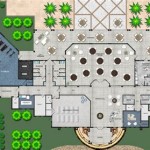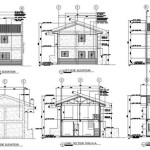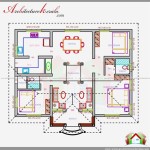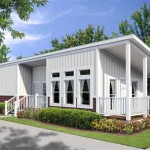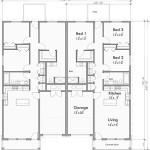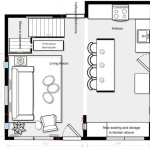Vastu Shastra Home Design and Plans: Unveiling the Principles of Harmony and Wellness
Vastu Shastra, an ancient Indian architectural philosophy, offers a comprehensive set of principles for designing homes that are aligned with the natural energy flows of the universe. Its aim is to create living spaces that promote physical, mental, and spiritual well-being.
In the realm of Vastu Shastra, every aspect of home design holds significance, from the orientation of the building to the placement of rooms and furniture. By adhering to these principles, homeowners can harness the positive energies of their surroundings and create a harmonious and nurturing environment.
Orientation and Zoning
The proper orientation of a home is crucial in Vastu Shastra. The ideal orientation is to have the entrance facing east or north. This aligns the home with the sunrise, which symbolizes positive energy and fresh beginnings. The northeast corner of the house should be allotted to the pooja room or meditation space, as this is considered the most sacred area.
Zoning plays a vital role in Vastu Shastra home design. The house is divided into nine zones, each associated with a specific planet and energy. The northeast zone represents spirituality, while the southwest zone is associated with relationships. By placing rooms and activities in the appropriate zones, homeowners can enhance the flow of positive energy throughout the home.
Kitchen and Dining Room
The kitchen, where food is prepared, is of great importance in Vastu Shastra. It should be located in the southeast corner of the house, as fire is associated with this direction. The stove should be placed in the southeast corner of the kitchen, facing east. This arrangement ensures that the cook faces east while preparing meals, which brings positive energy and nourishment to the family.
The dining room, where meals are consumed, should be located in the east or north of the house. This placement promotes harmony and digestion. The dining table should be rectangular or square, with the head of the family seated facing east.
Bedrooms and Bathrooms
The master bedroom, where the head of the household sleeps, should be located in the southwest corner of the house. This zone is associated with relationships and stability. The bed should be placed with the headboard facing south or west. Bedrooms for children or guests can be located in the west or north of the house.
Bathrooms, which are considered to be areas of purification, should be located in the northwest corner of the house. The toilet and shower should be placed in the west or north of the bathroom, facing west or south. This placement helps to flush away negative energy and promote cleanliness.
Other Considerations
In addition to the major aspects outlined above, Vastu Shastra also considers numerous other factors, such as the shape of the house, the materials used in construction, and the placement of doors and windows. By following these principles, homeowners can create a space that is not only visually appealing but also conducive to their overall well-being.
It is important to note that Vastu Shastra is not a rigid set of rules but rather a collection of guidelines that can be adapted to suit individual needs and preferences. By harmonizing their homes with the principles of Vastu Shastra, homeowners can create a living space that is both comfortable and life-enhancing.

Vastu Model Floor Plans For North Direction
The Best West Facing House Plans As Per Vastu Shastra

Vastu Shastra In Marathi House Plan And Designs Books
1bhk Tiny House Plans As Per Vastu Shastra
Gorgeous North Facing House Plans As Per Vastu Shastra

House Plans As Per Vastu Shastra Book Plan And Designs Books
Marvellous North Facing 2bhk Home Plans As Per Vastu Shastra

Pin By Escrowffer Com On Vastu Tips For Home House N Plans Layout
Diffe Land Sizes Of House Plans As Per Vastu Shastra Part 2

9 Vastu Shastra Ideas House N Plans


